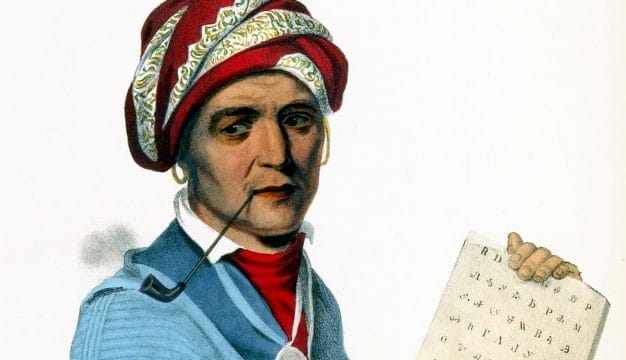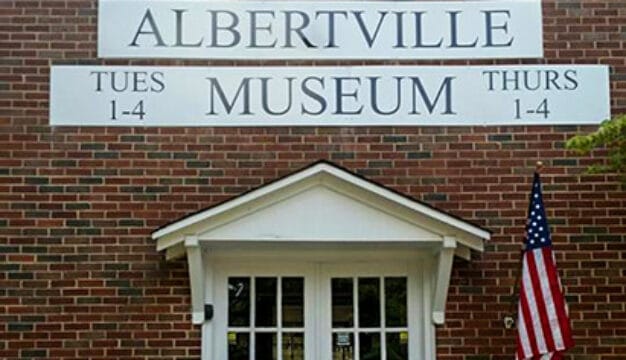Panton, Leslie & Company
Panton, Leslie & Company, established in 1783 by Scottish merchants William Panton, John Leslie, and Thomas Forbes, was a major mercantile firm that played a significant role in shaping political and military events along the United States’ border with colonial Florida in the late eighteenth and early nineteenth centuries. By 1795, the company had a virtual monopoly on trade with Native American groups in the Southeast, stretching northward from its headquarters in Pensacola to Memphis (Chickasaw Bluffs) and westward to New Orleans. The company also had a major post located in Mobile as well as posts in the Bahamas and other parts of the Caribbean. Panton, Leslie & Company traded European-made goods—primarily guns, powder, flint, and rum—to the Indians for deerskins, furs, bear oil, honey, and other foodstuffs. Several Native American tribes ceded land over the years to the United States and used the proceeds to satisfy their debts to Panton, Leslie & Company. This scheme resulted in the United States acquiring millions of acres of land within the current boundaries of Alabama and Mississippi.
The principal founder of the company, William Panton, was born in Scotland around 1745 and immigrated to North America in 1765. By 1774, Panton had become a partner in the Savannah, Georgia, trading firm of Moore and Panton. The next year, Panton was appointed by the British governor of East Florida as the colony’s official trader with the Creek Nation. Soon thereafter, he formed his own trading house with Thomas Forbes in Savannah known as Panton, Forbes and Company. At the outbreak of the American Revolution, Panton and Forbes remained loyal to Great Britain and were forced to move their business to St. Augustine in British East Florida. In retaliation for their support of the British, the United States confiscated their property in Georgia and South Carolina.
In 1783, fellow Scots William Alexander, Charles McLatchy, and John Leslie joined the firm, which was renamed Panton, Leslie & Company. By this time, the Revolutionary War had ended, and Great Britain had ceded Florida to Spain. The Spanish government initially asked the company to leave but soon recognized its value as an intermediary to the Native American groups of the region and also realized that there were no experienced Spanish traders to take its place. The Spanish government then granted the company a monopoly on trade with the Indians in Spanish East Florida and a tax-free status on imported goods. In 1785, the company relocated to Pensacola, where it dominated the trade with the Indians in West Florida. In 1792, Thomas Forbes’s younger brother John, John Forrester, and John Leslie’s brother Robert joined the firm. The company sent John Forbes to Mobile to open a post to oversee trade with the Indians in that area. At the height of its trading efforts, for several years the company in Pensacola annually took in some 250,000 deerskins, which in turn were sent to London to be used in the manufacture of leather goods.
The company’s influence with Indians in the Southeast undoubtedly was due in large part to its relationship with Alexander McGillivray, an important leader of the Creek Nation born to a Scottish trader and a Creek woman from the powerful Wind Clan in 1750 at Little Tallassee near present-day Wetumpka in Elmore County. Many historians believe that McGillivray, the leading chief of the Upper Creek towns along the Alabama, Coosa, and Tallapoosa rivers, was a silent partner in the company. In any event, it was a Creek force led by McGillivray that thwarted the efforts of William Augustus Bowles, a former British army officer living in the Creek Nation, to end the company’s monopoly of the Indian trade. In January 1792, Bowles led a Creek force that looted and took over the company’s store in San Marcos (now St. Marks), Florida. As a result, McGillivray and his men assisted the Spanish in arresting Bowles, who was ultimately imprisoned far away in the Spanish Philippines.
In addition to trading with the Creeks, the company also traded with the Seminoles, Chickasaws, Choctaws, and Cherokees. Opposed to the expansion of the United States, the company’s initial partners used their influence with these tribes to advance Spanish territorial claims against the United States and urged the Indians to resist white settlement and attempts by the United States to acquire land. As the newer partners, who were less hostile to the United States, gained control of the company, they pressured the Indians to sell their land in the hopes that the Indians might use the payments to pay off the debts (more than $200,000 by 1800) that the company had allowed them to accumulate. Increasing Indian indebtedness to the Panton, Leslie & Company resulted in a triangular scheme negotiated by the company and the U.S. government whereby the Indians would cede lands to the United States for cash, the Indians would use the cash to satisfy their debts to Panton, Leslie & Company, and the company would then release it claims against the Indians. The company did not, however, recover all of the monies owed it immediately because some Indians did not use the payments for their lands to repay their debts.
The company reorganized as John Forbes and Company in 1804 after the deaths of William Panton and John Leslie, with William Simpson and James Innerarity joining the remaining partners, Thomas and John Forbes. Overburdened by the time spent collecting debts owed by their Indian trading partners, the company began to scale back its Indian trade. At about the same time, it expanded its interests by opening trade with Spanish colonists in Florida, Texas, Lousiana and the Yucatan, and Americans living in the area north of the 31st parallel in present-day southern Alabama and Mississippi. By 1812, the Indian trade, which had been the source of the company’s fortune, was no longer even its principal source of income. In addition to its declining trade with Native Americans, the company’s fortunes suffered from the increasing rivalry between Spain and the United States in Florida and from the Creek War of 1813-14. Despite these setbacks, the John Forbes and Company reduced much of the Indian indebtedness and became the largest landowner in West Florida.
In 1818, the company was turned over to John and James Innerarity, and by 1821 its trade was restricted largely to Pensacola and Mobile. The company ceased to do business in Pensacola in 1830 when John Innerarity purchased most of the company property for his own use, leaving James Innerarity as the sole surviving partner. The company remained on the tax rolls in Mobile until James Innerarity died in 1847. The University of West Florida’s Pace Library contains an extensive collection of papers of the Panton, Leslie and Company, which provide a detailed view of almost every aspect of frontier life in British and Spanish Florida as well as the interaction of the colonial governments with Native Americans in the bordering southeastern states.
Additional Resources
Bense, Judith Ann, ed. Archaeology of Colonial Pensacola. Gainesville: University of Florida Press, 1999.
Coker, William S., and Thomas D. Watson. Indian Traders of the Southeastern Spanish Borderlands: Panton, Leslie & Company and John Forbes & Company, 1783-1847. Pensacola: University of West Florida Press, 1986.



